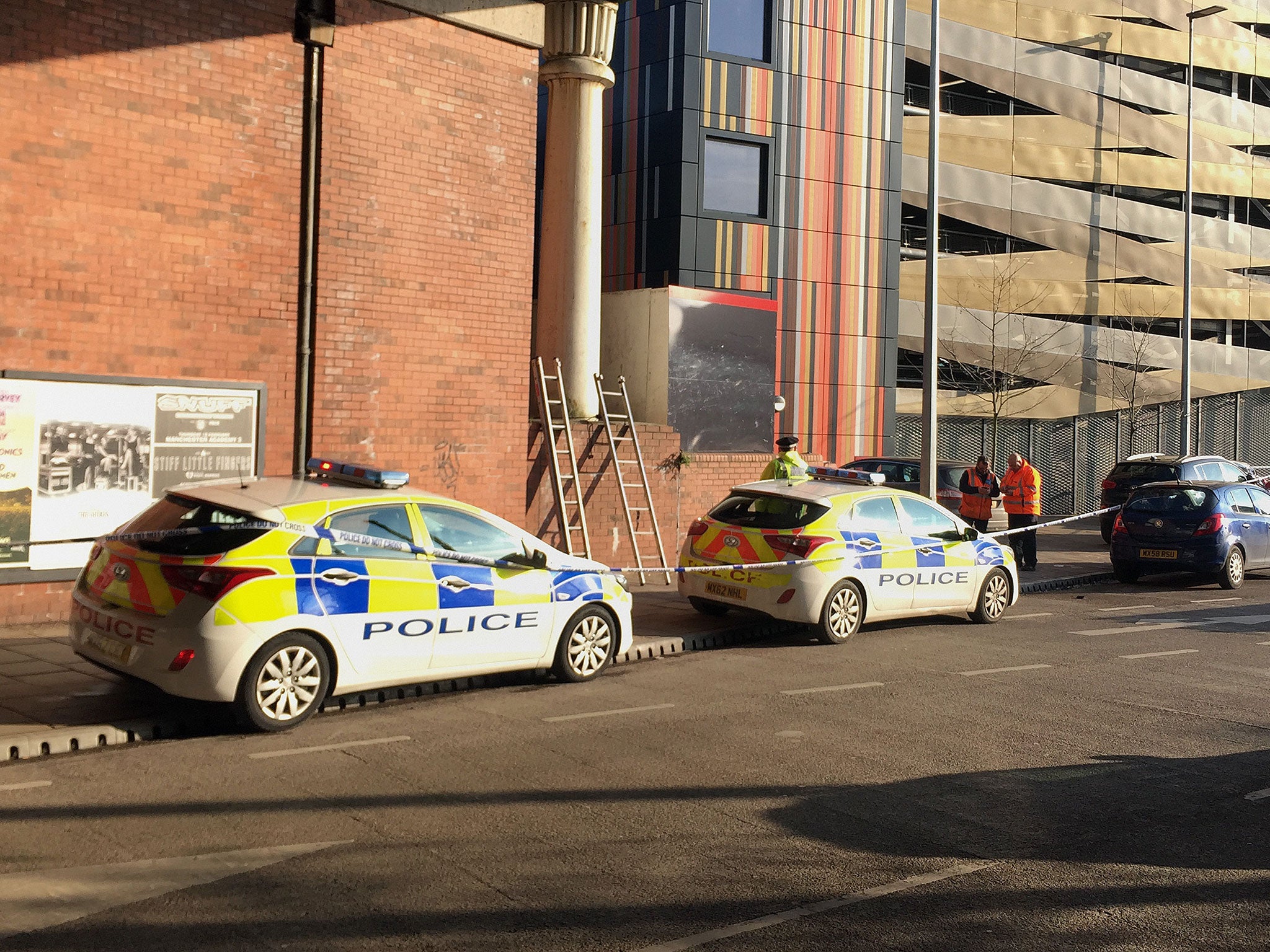Manchester residents shocked after homeless man's body found in a burning tent
Police have now launched a murder inquiry after post-mortem found the man died from multiple injuries

The suspected murder of a homeless man found dead in a burning tent has sparked shock and anger on the streets of Manchester, a city which has seen huge increase in rough sleepers.
Firefighters discovered the body of Daniel Smith as they tackled a blaze under a railway arch across the River Irwell in Salford during the early hours of 20 January.
Detectives have now launched a murder inquiry after a post-mortem found that the 23-year-old, who had been homeless for some time, died from multiple injuries. They believe the fire was started deliberately.
The secluded railway arches are used by homeless people to shelter from the cold weather. They are strewn with rubbish and contain a number of old garages powered by electric lights which were used as a depot for delivery vans.
Homeless people who have slept under the arches have spoken of their fears following Mr Smith’s death, as campaigners call for more support for the city’s rough sleepers.
New figures show there are around 70 rough sleepers in Manchester on any given night – believed to be the highest figure outside London – including 24 living in tents.
It is nearly double last year’s figure of 43 and ten times the figure of seven rough sleepers in 2010, although critics claim the Government figures grossly underestimate the actual numbers.
Among the rough sleepers is David Palmer, 38, who on 21 January was sitting in a torn blue sleeping bag outside a shop within sight of the railway arches.
“I used to sleep under the arches, but I stayed here last night beneath the CCTV cameras so that I could be seen,” said David, who has been on the streets since 2008. “All I heard was that he was beaten up and set on fire while was unconscious. It’s frightening. I’ve been threatened on the streets. It could have been any one of us. Manchester is one of the worst places to be homeless.”
Alex Lewis, 20, another homeless man wrapped in a thick coat and hat who was crouched on the pavement on Deansgate, a main shopping street in the city, had also stayed at the arches.
“I’ve stayed there a few times. It’s grim, but it’s out of the way and seemed to be safe, but I wouldn’t go there again. It’s horrible to think this has happened. I wouldn’t wish that on anyone. I don’t know how whoever did this can think they can get away with it.”
Another homeless man, a 29-year-old former soldier in fatigues who asked not to be named, said he had been sleeping near where the man died, but had left the area shortly before it happened.
“I saw all the flashing lights when I returned. Someone said that people rushed to help him. I’ve been in Manchester all this time, but I want to get away from here now after what has happened.”
The plight of the homeless in Manchester has been a long-running issue and led to a series of homeless “protest camps” being set up last summer, in breach of a legal ban won by the council preventing anyone pitching a tent without permission in the city centre.
In November last year, more than 20 tents appeared on land at the University of Manchester at a site that was dubbed the “Manchester Jungle” by some sections of the media. Rough sleepers were evicted from another camp known as “The Ark”.
Manchester City Council created 40 extra beds in September and launched plans in October to create a “homeless charter” backed by the police, charities, doctors and the Bishop of Manchester, the Right Reverend Dr David Walker.
It is to Manchester’s homeless community that police are now turning in a bid to trace Mr Smith’s killer, hoping that they might be able to provide vital information.
Forensic investigators were examining the cordoned off scene at the railway arches off Irwell Street on 21 January after accessing the area by climbing over a brick wall using ladders.
Chief Superintendent Mary Doyle, the commander of Greater Manchester Police’s Salford Division, said: “Our enquiries over the past 24 hours have found that this man suffered a number of injuries before his body was discovered in a tent following a fire and our thoughts are with Daniel’s family and friends at this terrible time.
“We have been carrying out a joint investigation with the fire service to establish the cause of this fire, which is now being treated as a deliberate ignition.
“We believe the answers to what happened to this man lie in the community, particularly other members of the homeless community who may have been nearby at the time.
“Someone must have seen, or heard something so we are appealing for anyone with even the smallest bit of information to come and tell us what they know.
“This is a tragic situation, and we are working with other agencies to assist the local community. We are determined to find out who is responsible and bring them to justice.”
Angela Penny Barratt
“These young men are all somebody’s sons,” she said. “They end up on the streets, get onto drugs and find themselves in trouble. There are lots of empty buildings around here. They need more places where it is safe to sleep.
“This isn’t the first death on the streets and it won’t be the last. Something needs to be done. It’s just awful.”
Bookmark popover
Removed from bookmarks